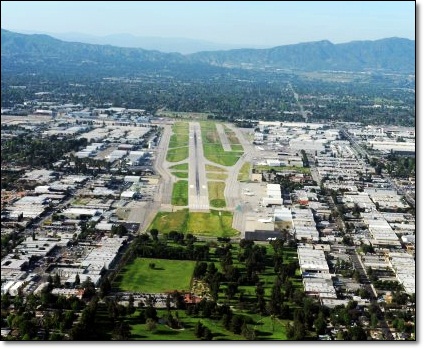Citing a major victory for airport businesses and employees, the Van Nuys Airport Association, which represents businesses at Van Nuys Airport (VNY) in Southern California, has struck a deal with the Los Angeles World Airports that reduces closure of the airport’s main runway from Los Angeles World Airports’ proposed 17 weeks to 10 days.
Highlights of the updated runway rehabilitation plan include:
-
- A combination of asphalt overlay and partial reconstruction phased over three sections of the runway — north end, south end and center section — for approximately three months. A mill and overlay will be performed on 4,400 feet of the runway’s center section, the largest portion of the project.
- Full runway closure for 10 days and 26 nights (10 p.m. to 6 a.m.), including project mobilization and close-out phases.
- Limited runway lengths for 65 days, with no less than 5,000 feet available for landings and 5,209 feet available for departures at all times.
- Isolated repairs on existing concrete runway ends, reconstruction of runway and shoulder pavements, high-speed exit light modifications and pavement markings.
 The consensus on how to proceed came after nearly three months of studies and negotiations among LAWA’s consultant HNTB Corp., whose engineers originally called for a total reconstruction of the 8,000-foot Runway 16R/34L, and VNAA’s consultants Kraus-Manning, Inc. and Labelle Marvin, whose engineers determined that an asphalt overlay could be performed within a much shorter timeframe, at a lower cost and with significantly less negative economic and operational impacts.
The consensus on how to proceed came after nearly three months of studies and negotiations among LAWA’s consultant HNTB Corp., whose engineers originally called for a total reconstruction of the 8,000-foot Runway 16R/34L, and VNAA’s consultants Kraus-Manning, Inc. and Labelle Marvin, whose engineers determined that an asphalt overlay could be performed within a much shorter timeframe, at a lower cost and with significantly less negative economic and operational impacts.
“Today marks a major victory in our efforts to save businesses and employees at Van Nuys Airport from the devastating effects of an extended runway closure,” said VNAA President Curt Castagna. “Over the past few months, we have worked with LAWA’s project team to determine a rational and prudent alternative that meets Federal Aviation Administration (FAA) requirements for runway lifespan and funding, optimizes airport safety and eliminates runway closures to the fullest extent possible.”
Some details of the compromise plan remain to be formalized through further collaboration, officials noted. The preferred alternative for project design and phasing must be submitted to the FAA by Sept. 30 to be eligible for funding during the current budget cycle.
“We’re optimistic we can achieve consensus within the desired timeframe,” Castagna said. “Overall, this runway improvement project will help preserve VNY’s status as L.A.’s business airport and the world’s premier general aviation facility. We could not have reached this point without the ongoing support of key stakeholders and elected officials, and we look forward to their continued involvement.”
Following additional stress testing of the runway and several technical workshops beginning last March, both Kraus-Manning and LaBelle Marvin recommended that a mill and overlay renovation with only nightly closures would be the best alternative. However, LAWA and HNTB Corp. engineers failed to agree, offering various options for a combination of overlay and reconstruction. As the Engineer of Record, HNTB Corp. must approve the final project design and specifications.
According to LAWA records, nighttime jet operations accounted for less than 1% of total takeoffs and landings at VNY in 2011. The rehabilitation work will not affect VNY’s 4,000-foot runway, used mainly by piston aircraft.
“Moving forward, we will remain focused on mitigating negative economic and operational impacts on airport operators and tenants,” Castagna said. “Even though shorter in duration, the upcoming runway closures and restrictions will disrupt business and result in millions of dollars in lost revenue.”
For more information: TheVNAA.org
